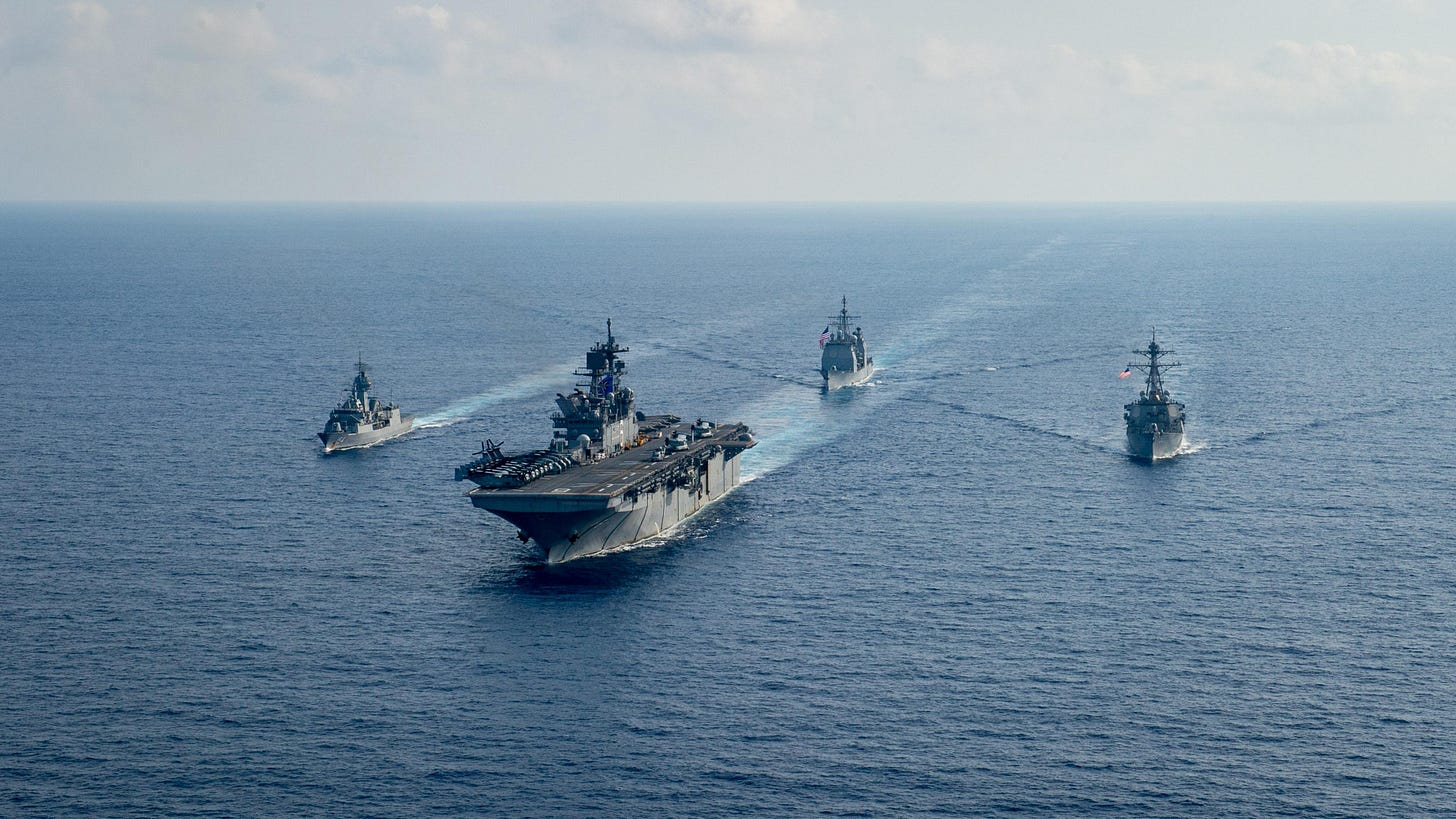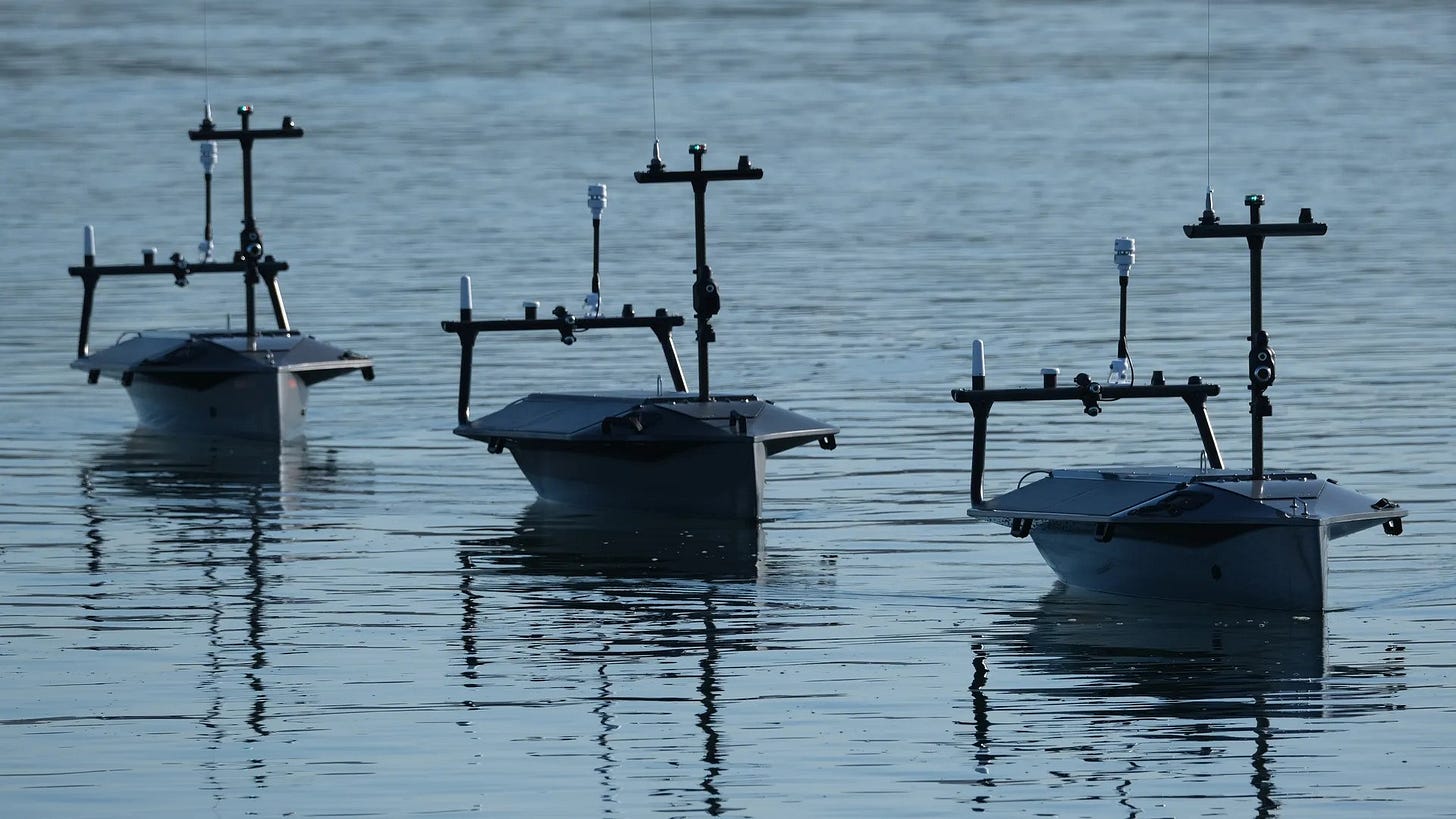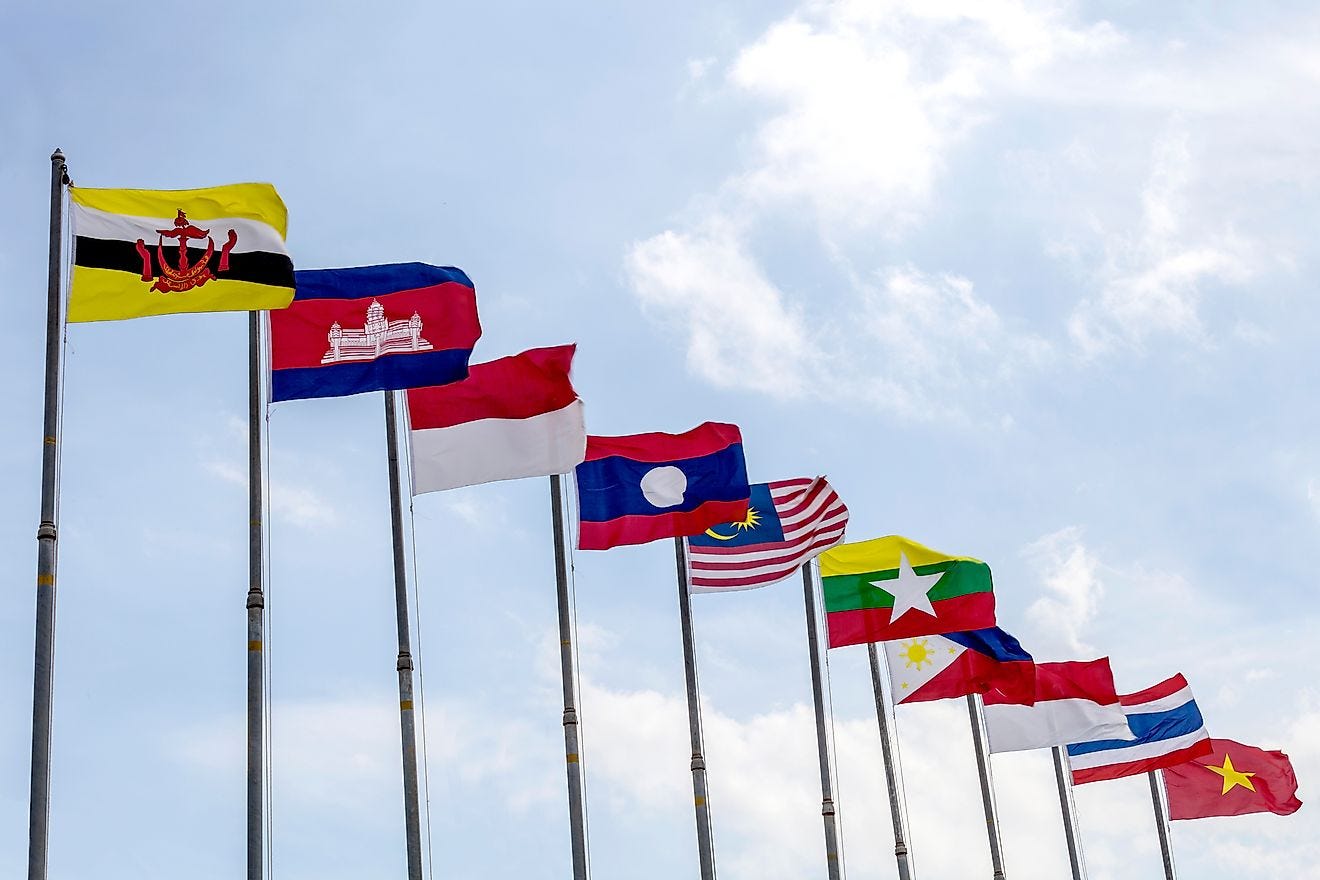Aerospace & Defense Partnerships in Allied Asia Are Reshaping Deep Tech Investment: A VC Perspective
While everyone debates geopolitical headlines, the real story is happening quietly across the Pacific.
TL;DR:
Allied Asia balances independence with deeper US integration—building indigenous capabilities that make them more valuable partners in the process
Companies like Anduril and Shield AI are pioneering rapid international expansion through allied market strategies—with Asia representing the next major opportunity.
Trade tensions are accelerating "friend-shoring," creating premium pricing and exclusive access for allied suppliers
Three sectors—aerospace systems, space tech, and advanced materials—offer compelling returns through trans-Pacific collaboration
We're at an inflection point: early allied partnerships will compound into multi-decade competitive moats by 2030
While geopolitical headlines dominate discourse, the real story in Allied Asian defense is collaboration across the Pacific-and the venture capital opportunities it creates.
The data reveals a different narrative than typical news coverage. US allies across Asia spend $340 billion annually on defense'—a market increasingly open to American technology partnerships and cross-border innovation. Yet most US investors remain focused on domestic opportunities while missing the integration happening across the Pacific.
As General Partner at Aero X Ventures, I spend significant time across Asia working within the defense ecosystems of Japan, South Korea, Singapore, and emerging markets like Thailand and the Philippines. This immersion has illuminated both challenges and immense potential in deepening technological partnerships with these critical allies. Having recently participated in JAXA's Space Finance Summit alongside regional government and industry leaders, l've witnessed firsthand how these partnerships are accelerating. What l've seen is American companies building an interconnected defense ecosystem that represents one of the most compelling opportunities in deep tech today.
US-Allied Integration: The Partnership Reality
When Japanese ground-based radar systems identify airspace intrusions, they integrate with US command networks. South Korean signal intelligence feeds American situational awareness systems. Indonesian tactical datalinks connect to US-designed platforms. This isn't theoretical-American technology is the backbone of an allied defense network actively emerging across the region.
The numbers tell the real story:
South Korea: Defense exports grew from $2.5 billion (2016) to $17.3 billion (2022), much of it US-compatible systems.
Japan: Committed $40 billion to F-X fighter program, designed for integration with US platforms
Singapore: $13.2 billion defense budget with 2.7% of GDP, highest defense spending ratio in ASEAN
But here's what makes this particularly compelling for US investors: these aren't independent national programs. They're increasingly collaborative efforts where American companies provide core technologies while Asian partners contribute advanced engineering, sophisticated manufacturing capabilities, and critical market access. This creates mutual value creation rather than traditional supplier relationships.
Allied Asia's Integration-Independence Balance
Asian allies aren't choosing between independence and US integration-they're building indigenous capabilities that make them more valuable partners in the process. This strategic recalibration creates complementary, not competing, defense ecosystems.
Japan's transformation exemplifies this approach: the 2014 defense export revision expanded Japan's strategic options while strengthening allied relationships. Japan's commitment to 2% GDP defense spending by 2027 supports advanced programs like the F-X fighter, where Japanese engineering expertise combines with allied technologies to create next-generation platforms. Companies like Mitsubishi Heavy Industries co-develop sophisticated systems through international partnerships, establishing Japan as both a leading technology contributor and major defense exporter.
South Korea proves the model's success: defense exports exploded from $2.5 billion to $17.3 billion (2016-2022), predominantly US-compatible systems sold to American allies-creating a multiplier effect for allied defense capabilities. The KF-21 fighter program represents pure allied synergy: joint development that strengthens the entire ecosystem.
Singapore positions itself as the crucial validation hub where US companies test technologies for broader Asian deployment, de-risking market entry while building next-tier partnerships. At 2.7% of GDP, Singapore maintains ASEAN's highest defense spending ratio while serving as the preferred gateway for regional technology deployment.
Our Investment Thesis: Three Sectors Driving Returns
At Aero X Ventures, we focus on opportunities where US innovation meets Asian execution capabilities at scale. The convergence is creating new categories of defensible competitive advantage backed by compelling regional data.
Advanced Aerospace Systems
Advanced Aerospace Systems represent the most mature opportunity: Al-integrated aircraft and UAV platforms where complementary technological strengths create breakthrough capabilities.
Asia-Pacific aerospace composites are growing at 9.40% CAGR to reach $12.31 billion by 2030, significantly outpacing broader market growth. Japan's $40 billion F-X program and South Korea's KF-21 demonstrate how trans-Pacific collaboration leverages each partner's advanced capabilities-from materials science and systems integration to Al and propulsion-creating exportable platforms that exemplify the power of allied innovation.
Space Technologies
Space Technologies offer the most accessible entry point with exceptional regional growth. Asia-Pacific satellite markets are expanding at remarkable rates: satellite internet at 14.9% CAGR reaching $5.98 billion by 2030, LEO satellites at 17.5% CAGR reaching $7.53 billion by 2030, and space launch services at 12.6% CAGR. Space tech's dual-use nature creates opportunities across both commercial and national security applications, offering diverse revenue streams and broader market access.
Advanced Materials
Advanced Materials create the most defensible moats within Asia's rapidly expanding materials sector. Asia-Pacific carbon fiber markets are growing at over 13% CAGR, with aerospace defense applications specifically growing at 9.0% CAGR. Advanced carbon materials are projected to reach $9.08 billion by 2031. US companies establishing strategic partnerships with Japan's Toray (carbon fiber), South Korea's Samsung/SK Hynix (semiconductors), and regional precision manufacturers access specialized capabilities and achieve cost efficiencies that enhance their competitive positioning.
Where Trade Tensions Are Accelerating Allied Innovation
Trade tensions create selective advantages in critical technology domains where strategic autonomy drives premium pricing and preferential access. Rather than hindering allied defense integration, US restrictions on Chinese suppliers make alliance partnerships more strategically valuable. Allied suppliers now command premium pricing specifically because they represent
trusted alternatives, while gaining accelerated access to US technology transfers and joint development programs. This "friend-shoring" dynamic transforms procurement from cost-driver to security-driven, creating sustainable competitive moats for companies positioned within allied ecosystems. The result: venture-backed startups designing for allied compatibility from inception achieve rapid international expansion and develop integrated partnerships that create multiple revenue streams beyond traditional transactional relationships.
The Next Five Years: A Structural Shift, Not a Trend
What we're witnessing represents a fundamental restructuring of global defense capabilities, not a cyclical trend driven by current geopolitical tensions. The technological integration between US and allied Asian defense systems is creating irreversible network effects.
By 2030, we anticipate standardized interoperability protocols across allied defense systems, creating valuable network effects for established participants. Companies establishing technology partnerships today gain deeper market knowledge and stronger relationships as the ecosystem matures—a foundation essential for capturing the full potential of Allied Asia's defense transformation.
The investment opportunity transcends geographic diversification. US companies at the center of this allied technology ecosystem will capture disproportionate returns as defense budgets expand and collaborative frameworks deepen. The infrastructure being built today-from shared testing facilities to integrated supply chains-represents the foundation of multi-decade competitive advantage.
The allied technology ecosystem isn't just emerging—it's reaching the inflection point where early partnerships become lasting strategic moats.
This transformation is happening now, not later. We're connecting the companies, investors, and leaders shaping Allied Asia's defense technology future. Join the conversation— whether you're seeking capital, partnerships, or market intelligence in this rapidly evolving space.
Sources and References
Stockholm International Peace Research Institute (SIPRI). (2024). Military Expenditure
Database, April 2024. https://www.sipri.org/databases/milex
Ministry of Foreign Affairs of Japan. (2014). Three Principles on Transfer of Defense Equipment and Technology. https://www.mofa.go.jp/press/release/press22e 000010.html
Japan Ministry of Defense. (2023). F-X Next Generation Fighter Aircraft Program Overview.
Korea Defense Industry Association. (2024). Annual Defense Industry Export Report 2023.
Singapore Ministry of Defense. (2024). Defense Budget Allocation.
Mordor Intelligence. (2024). Asia-Pacific Defense Market Report.
https://www.mordorintelligence.com/industry-reports/asia-pacific-defense-marketMordor Intelligence. (2024). Asia-Pacific Aerospace Composites Market Report.
https://www.mordorintelligence.com/industry-reports/asia-pacific-aerospace-composites-marketGrand View Research. (2024). Asia Pacific Satellite Internet Market Outlook.
https://www.grandviewresearch.com/horizon/outlook/satellite-internet-market/asia-pacificGrand View Research. (2024). Asia Pacific LEO Satellite Market Outlook.
https://www.grandviewresearch.com/horizon/outlook/leo-satellite-market/asia-pacificFortune Business Insights. (2024). Asia Pacific Space Launch Services Market Report.
https://www.fortunebusinessinsights.com/asia-pacific-space-launch-services-market-107569Cognitive Market Research. (2024). Asia Pacific Advanced Carbon Materials Market Report.
https://www.cognitivemarketresearch.com/regional-analysis/asia-pacific-advanced-carbon-materials-market-reportMordor Intelligence. (2024). Asia-Pacific Carbon Fiber Market Report.
https://www.mordorintelligence.com/industry-reports/asia-pacific-carbon-fiber-market
13. Shield Al. (2025). V-BAT Selected as Japan Maritime Self-Defense Force's First Maritime ISR Platform.
All figures verified through primary sources. Defense spending methodologies may vary between organizations









Great post Aaron! Currently traveling in Japan,.."indigenous capabilities that make them more valuable partners" - 100%